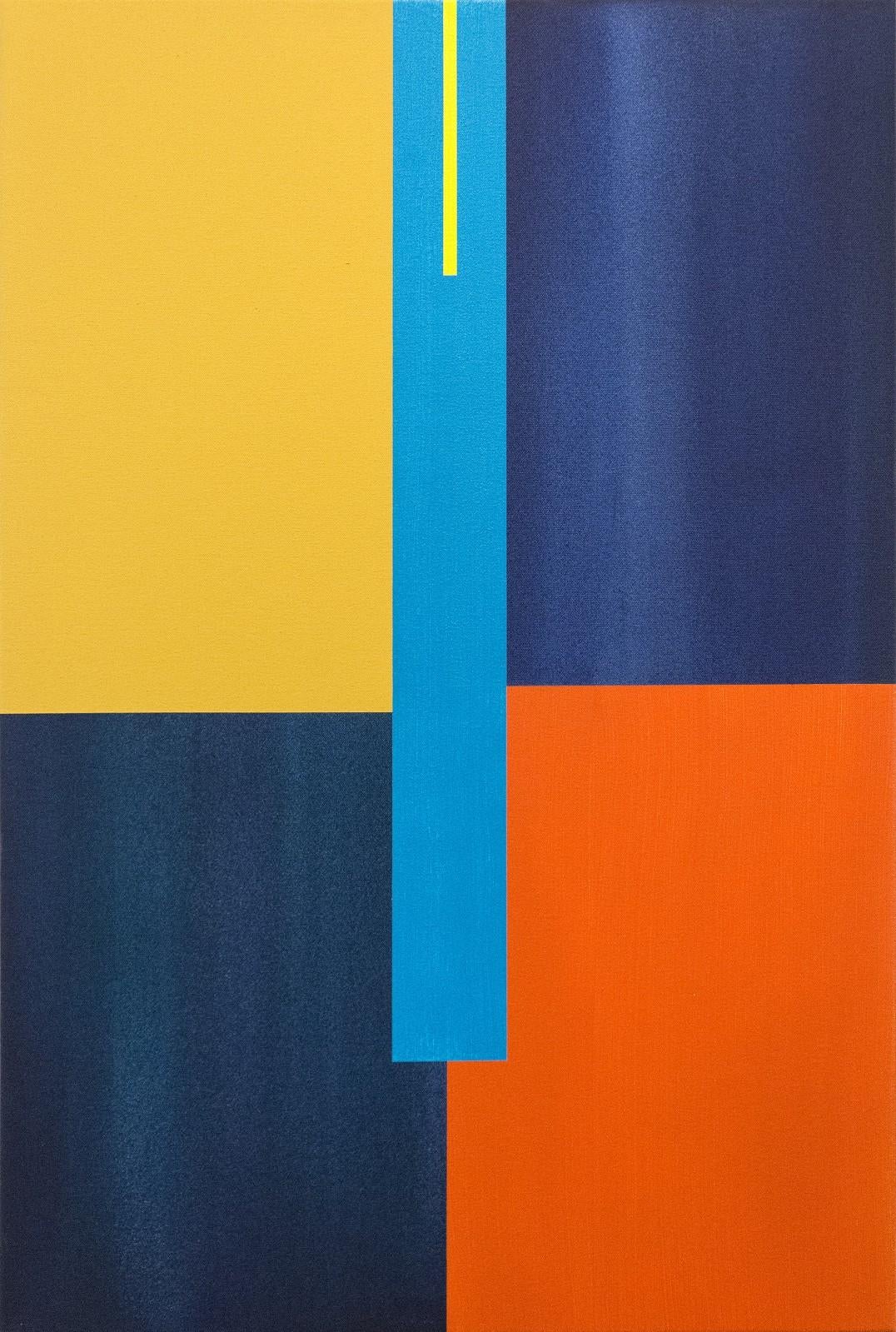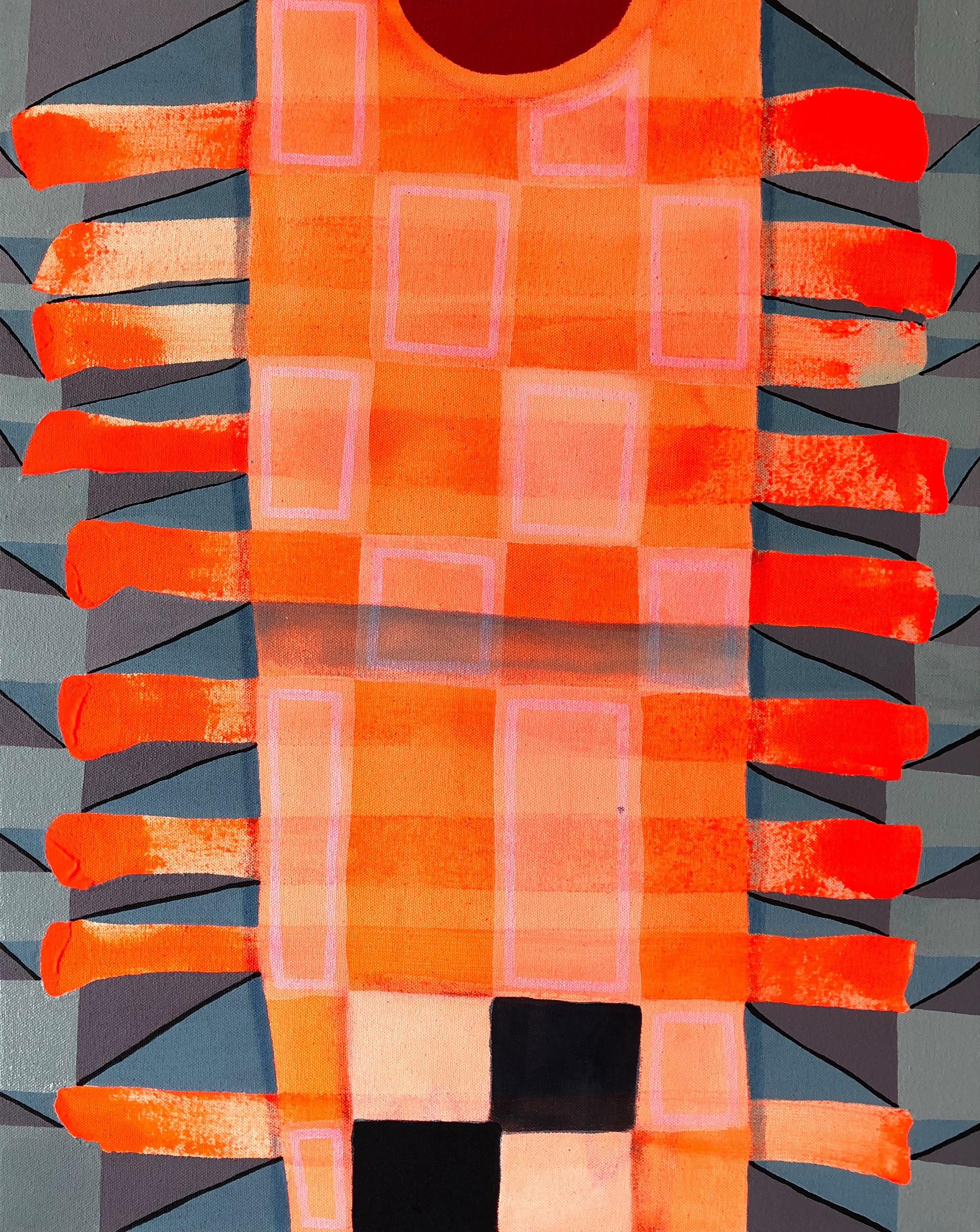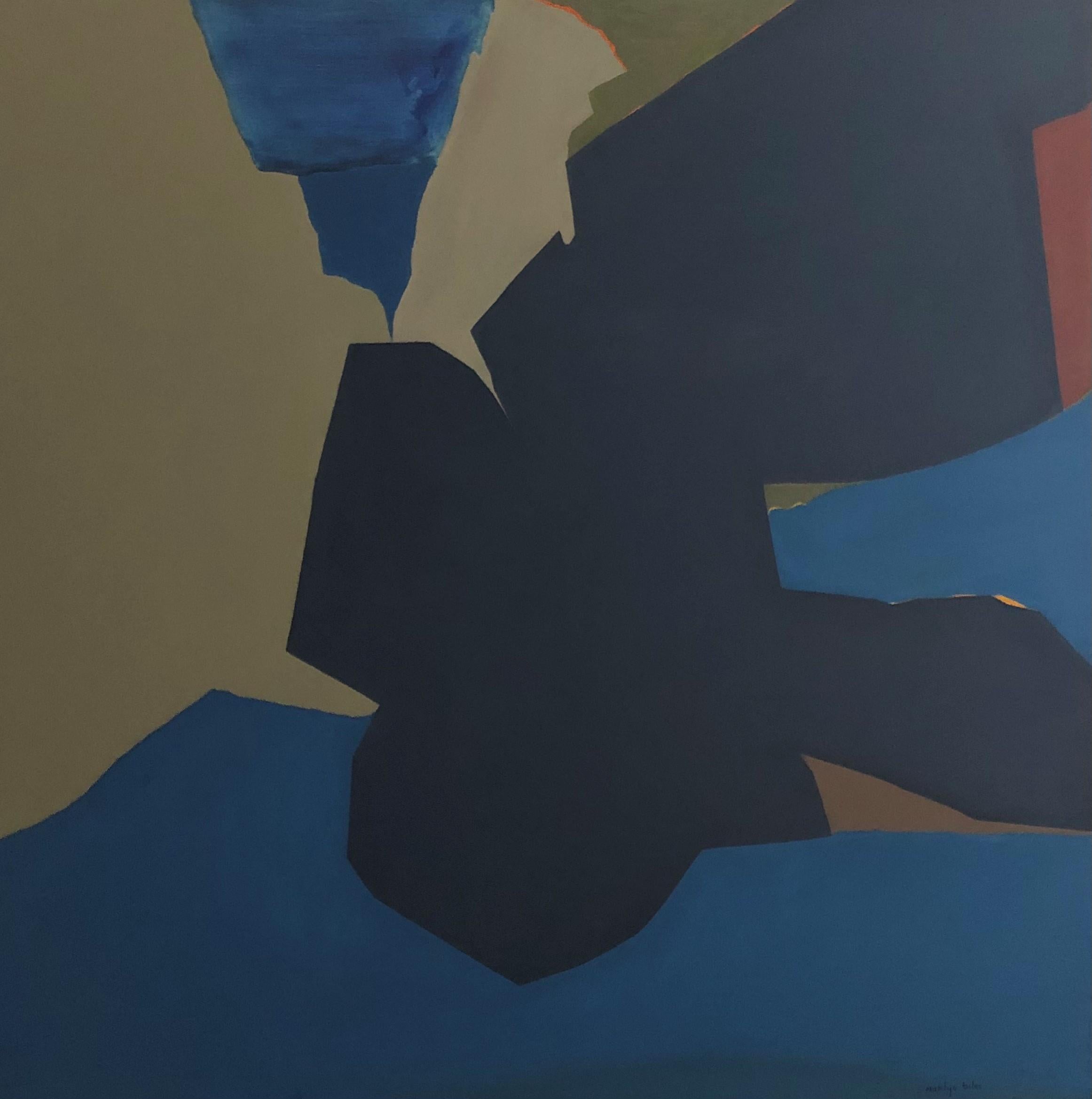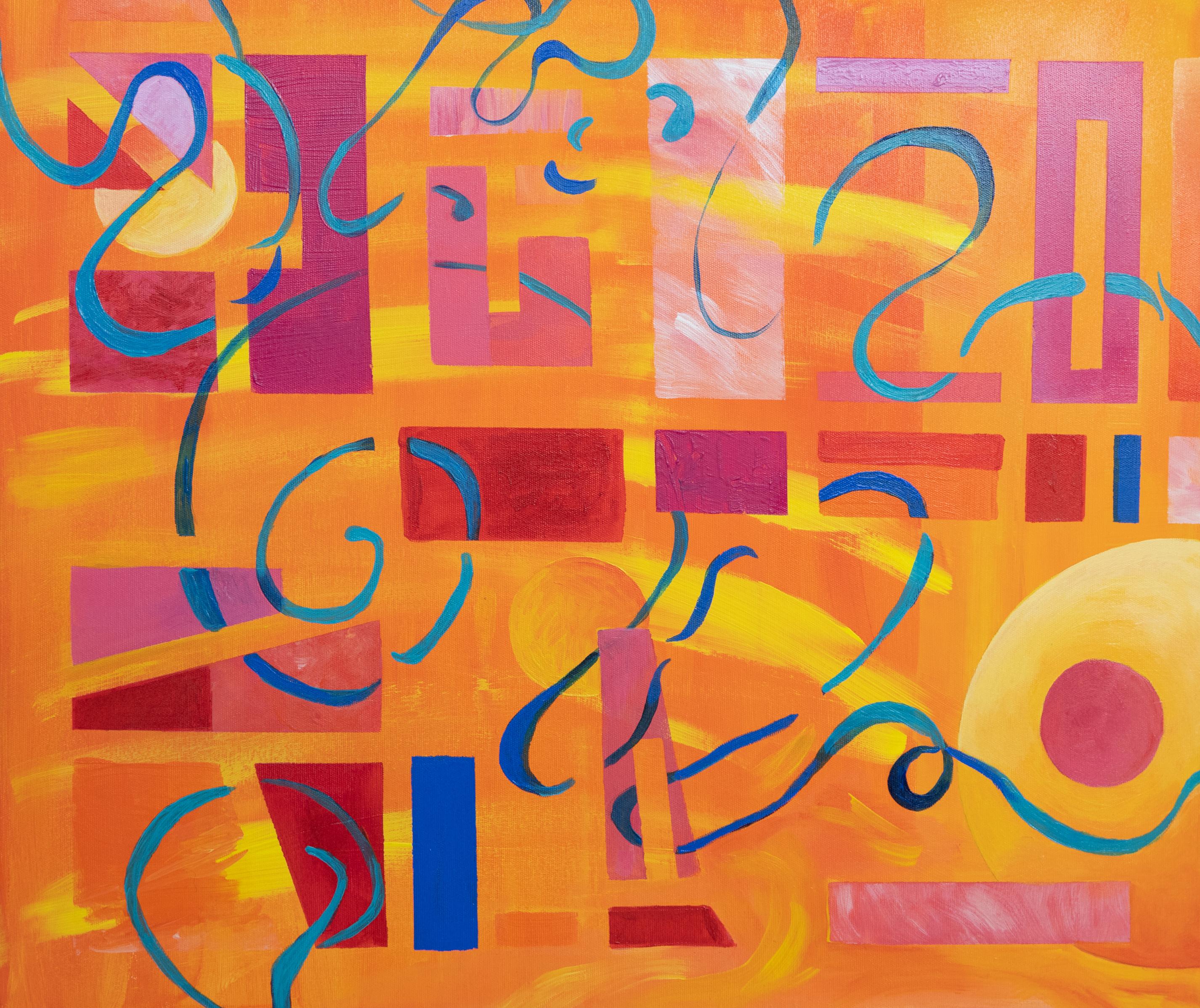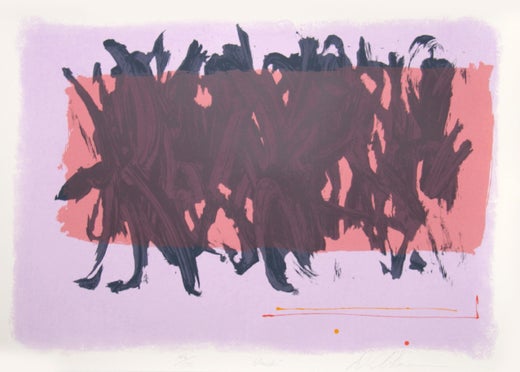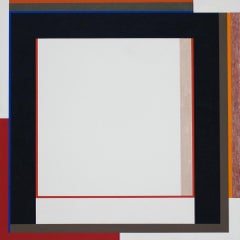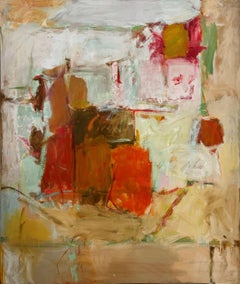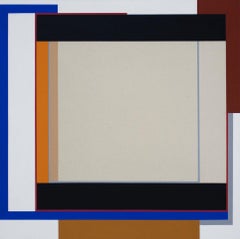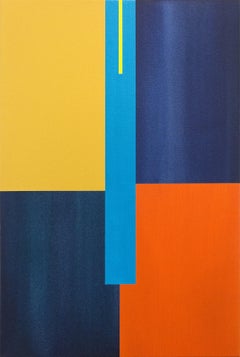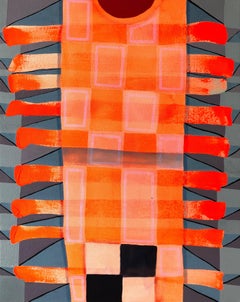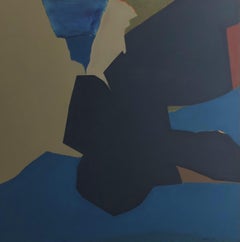Items Similar to "Untitled" Dan Christensen, Geometric Plaid Series, Orange and Blue Abstract
Want more images or videos?
Request additional images or videos from the seller
1 of 8
Dan Christensen"Untitled" Dan Christensen, Geometric Plaid Series, Orange and Blue Abstractcirca 1970-71
circa 1970-71
$17,500
£13,364.85
€15,308.71
CA$24,964.81
A$27,209.42
CHF 14,169.44
MX$328,301.68
NOK 178,115.53
SEK 167,209.05
DKK 114,336.66
About the Item
Dan Christensen
Untitled, circa 1970-71
Acrylic and enamel on canvas
44 x 20 inches
Provenance:
The artist
Sherron Francis (gift from the above)
Dan Christensen was an American abstract artist. An art critic, Clement Greenberg, described Dan Christensen’s art as Color Field or Post-Painterly Abstraction. One of the American leading abstract artists, Dan Christensen art was expressed through the use of both line and color. But apart from being abstract, Dan Christensen art and paintings offer a wide variety of styles, including modernism.
Inspired by the artwork of Jackson Pollock at an early age, artist Dan Christensen spent 40 years painting. And not only painting, but exploring everything connected to the art of painting. As a result, Dan Christensen art and paintings were original, joyful and surprising. He was innovative at the time when painting was dead. He was also a truly dedicated artist and his work meant a lot to him. Dan Christensen artist and painter, came up with the term “the harmonious turbulence of the universe”. This turbulence came from his exploratory approach to creating artwork.
Artist Dan Christensen was born in Cozad, Nebraska, in 1942. He graduated from high school in North Platte, and later attended Chadron State College in the late 1950s, where his artistic talent was first recognized by his professors. He transferred to the Kansas City Art Institute, where he studied alongside Sherron Francis and graduated as class valedictorian in 1964.
In 1964, artist Dan Christensen moved to New York, where he worked at various jobs – as a bartender, carpenter and many other things, while starting his career as an artist. It happened then and there that Dan Christensen art was influenced by the city and the art world of New York.
In 1967, Dan Christensen art made the move from figuration to abstract painting. He started producing paintings with a spray gun, giving them the definition of abstract and original. He drew loops, lines and colorful stacks on his paintings, which made his art instantly noticeable and got him his first artwork exhibition at the Andre Emmerich Gallery.
Two years later, in 1969, Dan Christensen art took a new course. He started creating geometric “plaid” paintings, and had a first one-person show at the same Andre Emmerich Gallery, along with the prominent Kenneth Noland, Jules Olitski and Helen Frankenthaler. One of Dan Christensen most famous paintings, Lisa’s Red is from this period. This painting was included in an exhibition of his work from 1966 to 2006. The exhibition was held at Sheldon Museum and was titled “Dan Christensen: Forty Years of Painting”.
In the 1970s and 80s, artist Dan Christensen was exploring new techniques. At that time, Dan Christensen was already an acclaimed artist in New York. But as Jacobshagen said, outside New York, probably nobody knew him. Keith Jacobshagen, a Lincoln painter, had a good feeling about Dan Christensen’s artistic talent from the very first beginning of his career as an artist. He was at the Kansas City Art Institute with Christensen in the early 1960s and said – “He had a real nice sense of skill and of touch. He was painting figuratively at that time. It wasn’t until Dan Christensen moved to New York and was influenced by the city and the New York art world that he started painting abstraction.” Along with Jacobshagen, Kennedy, the curator of Sheldon Museum of Art supported Dan Christensen’s art. He described artist Dan Christensen as innovative and a really dedicated artist. Both of them consider that no one but Dan Christensen managed to gain a national reputation at that time, and no one but he was supposed to. But before them, there was an architect, Philip Jonson, who supported his art from his early steps. He bought some Dan Christensen art and even gave one painting to the Museum of Modern Art.
Fifty years later, in the 2000s, Dan Christensen is the most noted Nebraska native artist of his era, and a highly regarded artist and painter. Artist Dan Christensen’s unique approach to line and shape was even researched at the Butler Institute of American Art, Ohio. Dan Christensen art is now highly regarded everywhere. His paintings are highly collectible and widely held by both art collectors and museums. It can now be difficult to find Dan Christensen art for sale, and Kennedy, the curator of the Sheldon Museum of Art, claims that Dan Christensen should have been recognized much earlier.
Artist Dan Christensen spent his whole life creating art. From the 1970s to the very end of his life he was exploring new art and painting techniques. Dan Christensen spent the end of his life in East Hampton. He died in 2007, but Dan Christensen art is now more alive than ever. The collectors are buying his art and the exhibitions of his work are being held around the USA.
- Creator:Dan Christensen (1942 - 2007, American)
- Creation Year:circa 1970-71
- Dimensions:Height: 45 in (114.3 cm)Width: 21 in (53.34 cm)
- Medium:
- Movement & Style:
- Period:
- Condition:
- Gallery Location:New York, NY
- Reference Number:1stDibs: LU1841213149092
Dan Christensen
Dan Christensen, (October 6, 1942 – January 20, 2007) was an American abstract painter He is best known for paintings that relate to Lyrical Abstraction, Color field painting and Abstract expressionism.Christensen was born in Cozad, Nebraska, and died in Easthampton, New York. His early work from 1965-1966 was related to Minimalism. A graduate of the Kansas City Art Institute, class of 1964, Dan Christensen moved to New York City from the Mid-West during the late summer of 1965. Christensen was represented by several influential galleries including the Andre Emmerich Gallery, the Salander/O'Reilly Gallery and various others throughout the United States and Europe. He has had more than seventy-five solo exhibitions and his work has been included in hundreds of group exhibitions. His paintings are in important museum collections throughout the United States and Europe.
About the Seller
5.0
Platinum Seller
Premium sellers with a 4.7+ rating and 24-hour response times
Established in 2022
1stDibs seller since 2022
127 sales on 1stDibs
Typical response time: 1 hour
- ShippingRetrieving quote...Shipping from: New York, NY
- Return Policy
Authenticity Guarantee
In the unlikely event there’s an issue with an item’s authenticity, contact us within 1 year for a full refund. DetailsMoney-Back Guarantee
If your item is not as described, is damaged in transit, or does not arrive, contact us within 7 days for a full refund. Details24-Hour Cancellation
You have a 24-hour grace period in which to reconsider your purchase, with no questions asked.Vetted Professional Sellers
Our world-class sellers must adhere to strict standards for service and quality, maintaining the integrity of our listings.Price-Match Guarantee
If you find that a seller listed the same item for a lower price elsewhere, we’ll match it.Trusted Global Delivery
Our best-in-class carrier network provides specialized shipping options worldwide, including custom delivery.More From This Seller
View All"Jean Jean" Larry Zox, Color Field, Geometric Abstraction, Hard-Edge, Yellow
By Larry Zox
Located in New York, NY
Larry Zox
Jean Jean, 1964
Signed, dated, and titled on the stretcher
Liquitex on canvas
58 x 62 inches
Provenance:
Solomon & Co., New York
Private Collection, NJ
Estate of the above, 2023
Committed to abstraction throughout his career, Larry Zox played a central role in the Color Field discourse of the 1960s and 1970s. His work of the time, consisting of brilliantly colored geometric shapes in dynamic juxtapositions, demonstrated that hard-edge painting was neither cold nor formalistic. He reused certain motifs, but he did so less to explore their aspects than to “get at the specific character and quality of each painting in and for itself,” as James Monte stated in his essay for Zox’s solo exhibition at the Whitney Museum of American Art in 1973. By the 1970s, Zox was using a freer, more emotive method, while maintaining the autonomy of color, which increasingly became more important to him than structure in his late years.
Zox began to receive attention in the 1960s, when he was included in several groundbreaking exhibitions of Color Field and Minimalist art, including Shape and Structure (1965), organized by Henry Geldzahler for the Gallery of Modern Art, New York, and Systemic Painting (1966), organized by Lawrence Alloway for the Guggenheim Museum. In 1973, the Whitney’s solo exhibition of Zox’s work gave recognition to his significance in the art scene of the preceding decade. In the following year, Zox was represented in the inaugural exhibition of the Hirshhorn Museum, which owns fourteen of his works.
Zox was born in Des Moines, Iowa. He attended the University of Oklahoma and Drake University. While studying at the Des Moines Art Center, he was mentored by George Grosz, who despite his own figurative approach encouraged Zox’s forays into abstraction. In 1958, Zox moved to New York, joining the downtown art scene. His studio on 20th Street became a gathering place for artists, jazz musicians, bikers, and boxers. He occasionally sparred with the visiting fighters. He later established a studio in East Hampton, where he painted and fished including using a helicopter to spot fish.
In the 1950s and early 1960s, Zox’s works were collages consisting of painted pieces of paper stapled onto sheets of plywood. He then produced paintings that were illusions of collages, including both torn- and trued-edged forms, to which he added a wide range of intense hues that created ambiguous surfaces. Next, he omitted the collage aspect of his work and applied flat color areas to create more complete statements of pure color and shape.
From 1962 to 1965, he produced his Rotation Series, at first creating plywood and Plexiglas reliefs, which turned squares into dynamic polygons. He used these shapes in his paintings as well, employing white as a foil between colors to produce negative spaces that suggest that the colored shapes had only been cut out and laid down instead of painted. The New York Times noted in 1964: “The artist is hip, cool, adventurous, not content to stay with the mere exercise of sensibility that one sees in smaller works.”
In 1965, he began the Scissors Jack...
Category
1960s Abstract Geometric Abstract Paintings
Materials
Canvas, Acrylic
$64,000 Sale Price
20% Off
"Untitled" Elaine Lustig Cohen, Hard-edged, Geometric Abstraction, Modernist
By Elaine Lustig Cohen
Located in New York, NY
Elaine Lustig Cohen
Untitled, circa 1979
Acrylic on canvas
36 x 36 inches
Elaine Lustig Cohen was a New York–based, artist, graphic designer, archivist and rare book dealer. At the...
Category
1970s Abstract Geometric Abstract Paintings
Materials
Canvas, Acrylic
"#10 Big Orange and Turquoise" Diana Kurz, Abstract Expressionist Painting
By Diana Kurz
Located in New York, NY
Diana Kurz
#10 Big Orange and Turquoise, 1962
Signed lower right
Oil on canvas
53 x 47 1/2 inches
Diana Kurz (born 1936) is an Austrian-born feminist painter. In 1938, Diana Kurz's...
Category
1960s Abstract Expressionist Abstract Paintings
Materials
Canvas, Oil
"Untitled" Elaine Lustig Cohen, Geometric Abstraction, Hard-edged, Modernist
By Elaine Lustig Cohen
Located in New York, NY
Elaine Lustig Cohen
Untitled, circa 1979
Acrylic on canvas
36 x 36 inches
Elaine Lustig Cohen was a New York–based, artist, graphic designer, archivist and rare book dealer. At the...
Category
1970s Abstract Geometric Abstract Paintings
Materials
Canvas, Acrylic
"Untitled" Calvert Coggeshall, Abstract Expressionism Hard-edge Stripes
Located in New York, NY
Calvert Coggeshall
Untitled, circa 1975
Oil on canvas
50 x 40 inches
Calvert Coggeshall worked as an abstract painter and interior designer primari...
Category
1970s Abstract Expressionist Abstract Paintings
Materials
Canvas, Acrylic
"Untitled" Gene Hedge, Abstract Color Field, Red Blue Orange Midcentury Painting
Located in New York, NY
Gene Hedge
Untitled, circa 1970
Acrylic on canvas
48 x 18 inches
Provenance
Estate of the artist
Gene Hedge was born (1928) and raised in rural Indiana. After military service, he...
Category
1970s Color-Field Abstract Paintings
Materials
Canvas, Acrylic
You May Also Like
Verticality #2 - modern, contemporary, geometric abstract, acrylic on canvas
By Milly Ristvedt
Located in Bloomfield, ON
Juxtaposed blocks of navy, orange and canary held by a bar of sky blue create a subtle optical effect in this masterful composition by Milly Ristvedt. Art Critic Barry Lord (Art in A...
Category
2010s Abstract Geometric Abstract Paintings
Materials
Canvas, Acrylic
“Untitled (CVS166)” Contemporary Orange and Pink Geometric Abstract Painting
Located in Houston, TX
Contemporary geometric colorful abstract painting by Texas-based artist Max Manning. The work features organic and geometric shapes in orange and pink tones. Signed, titled, & dated ...
Category
2010s Contemporary Abstract Paintings
Materials
Canvas, Acrylic
Expansion/Contraction #21: geometric abstract Op Art painting, blue-green orange
By Benjamin Weaver
Located in Bryn Mawr, PA
Benjamin Weaver creates spatial tension through his use of contrasting colors arranged in a geometric framework. Imagery and color work both with and a...
Category
2010s Abstract Abstract Paintings
Materials
Canvas, Acrylic
Blues Overlapping Orange 47 x 47 Abstract Art Bold Colors $4400 Geometric
Located in Houston, TX
Blues Overlapping Orange 47 x 47 Abstract Art Bold Colors $4400 Geometric Shapes
Other painting by Marilyn Biles shown in images
As life often does, the life of Marilyn Biles h...
Category
1990s Abstract Abstract Paintings
Materials
Canvas, Oil
"Blue, Blue" Playful Abstract Geometric Shades of Blue White Orange
By Margo Margolis
Located in Wellesley, MA
This abstraction by NY based artist Margo Margolis has a very sophisticated/playful sensibility with brilliant, intense color (light blue, dark blue, orange and white) which is the significant attribute of the artist's flashe medium, a water based French paint. Consisting of multiple layers of underpainting and glazing, and contrasts between hard and soft edges, these paintings not only have associations with Henri Matisse's palette and Alexander Calder's sculptural forms, but also share in these artists' complexities after relatively straightforward initial first takes. Fresh and intelligent exploration into the possibilities for abstraction are Margolis's focus, and her paintings achieve that rare quality of making abstraction feel new.
Margo Margolis
"Blue, Blue"
2022
Flashe on Canvas
40 x 32 x 1.25 Inches
This painting is unframed and framing is not necessary as the sides are painted white.
It is currently on view in an exhibition of the artist's work in Wellesley, MA where it is featured in a group of works of varying sizes, small, medium, and large: 24 x 20 inches, 40 x 32 inches, 72 x 60 inches, and works on paper measuring 30 x 22 inches. Also available are a series of earlier small canvases measuring 14 x 11 inches each which also work well as groupings.
Margolis’s continuing commitment to abstract painting dates back to the early 1970s when she began exhibiting with the Brooke Alexander Gallery in New York where she had several shows. In addition her work has been exhibited throughout the country at numerous galleries and institutions including The Pennsylvania Academy of Art, The Renaissance Society, The Munson-Williams Proctor Institute and Halls Walls, among others.
In reviewing the artist’s 1993 exhibition in the Beth Urdang...
Category
2010s Abstract Abstract Paintings
Materials
Mixed Media
Orange abstract geometric art . original painting
Located in Zofingen, AG
This is an orange abstract painting created with acrylic on canvas, featuring beautiful patterns in pink, red, yellow, and blue.
Inspired by Ad Reinhardt's abstract works and geome...
Category
2010s Pop Art Abstract Paintings
Materials
Canvas, Acrylic
More Ways To Browse
Modern Abstract Painting Circa 1970
Vintage Bartender
Nebraska Artist
Keith Jacobshagen
Sherron Francis
Blue Jay Painting
Camellia Painting
Gillian Ayres
Large Vertical Paintings
Rhode Island Painting
Saito Kikuo
Solo Sofa
Cubism Oil Painting
Karl Otto
Katia Pissarro
Painting Secret Garden
Black White Gold Painting
Bob Hunt
